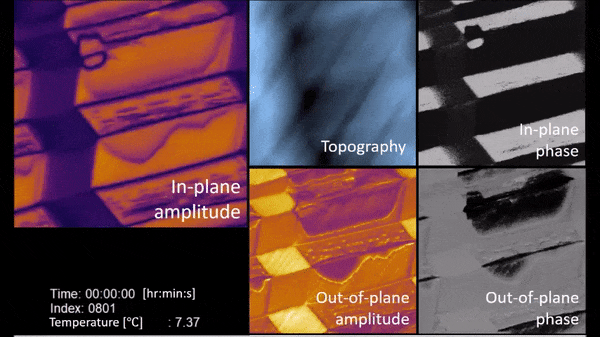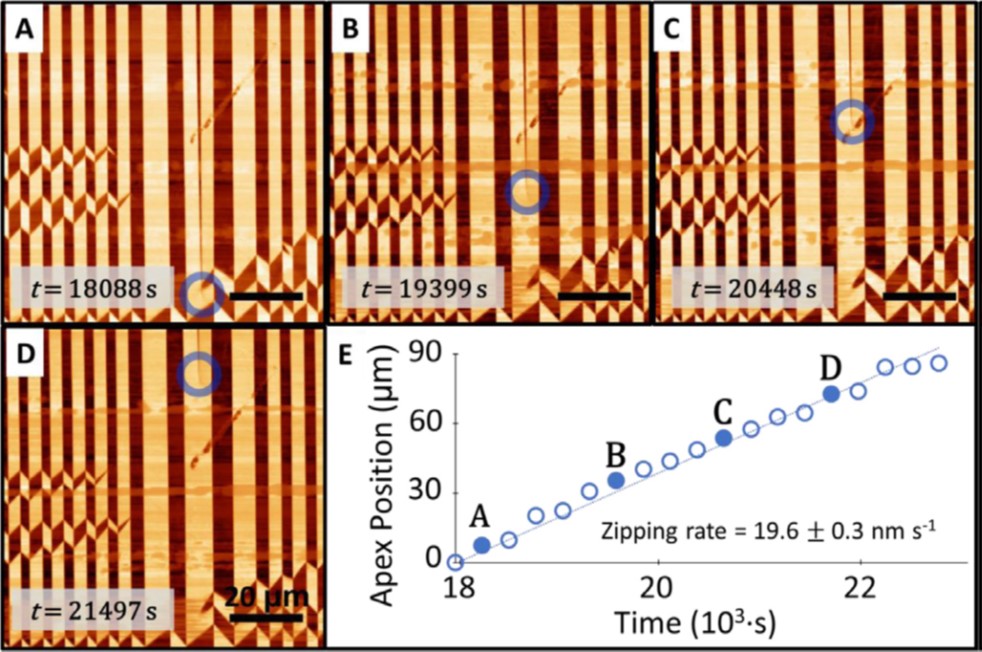AFM Systems
AFM Accessories
Learning
Contact Us
 Part of the Oxford Instruments Group
Part of the Oxford Instruments Group
Researchers at Technion–Israeli Institute of Technology have characterized polarization switching dynamics in ferroelectric BaTiO3 (BTO) by piezoresponse force microscopy (PFM) imaging as a function of temperature.

The switchable polarization domains in ferroelectric materials form the heart of technology ranging from medical ultrasound to mobile-phone antennas. A clearer picture of what happens to the mesoscale domains during ferroelectric transformations could advance technology further. Unfortunately, suitable tools are usually too slow to capture these abrupt processes.
The researchers showed that AFM techniques can investigate these ferroelectric domain dynamics on the mesoscale. Precise temperature control and very low heating rates let them slow the timescale of the orthorhombic-to-tetragonal transition in BTO to match PFM imaging rates. PFM videos indicated four distinct mechanisms in the transition and enabled quantitative analysis of the processes.
By bridging current macro- and microscale models of ferroelectric transitions, these findings help uncover the fundamentals of ferroelectricity and may enhance its use in technological applications.

MFP-3D BIO AFM with the CoolerHeater sample stage
Ferroelectric domains were imaged with vector piezoresponse force microscopy (PFM) while increasing the sample temperature very slowly (<1 °C in ~48 min). This super-low heating rate, plus the nanoscale spatial resolution of MFP-3D AFMs, made it possible to capture phase transitions in fine detail. Videos of domain dynamics made by continuous imaging over several hours (see supplementary materials on the journal site) were possible due to high temperaure stability (<0.01 °C).
Citation: A. Hershkovitz, F. Johann, M. Barzilay et al., Mesoscopic origin of ferroelectric-ferroelectric transition in BaTiO3: Orthorhombic-to-tetragonal domain evolution. Acta Mater. 187, 186 (2020). https://doi.org/10.1016/j.actamat.2020.01.051
Note: The data shown here are reused under fair use from the original article, which can be accessed through the article link above.
